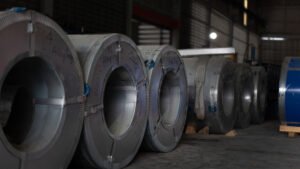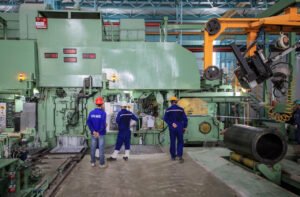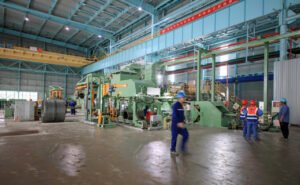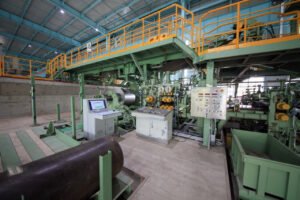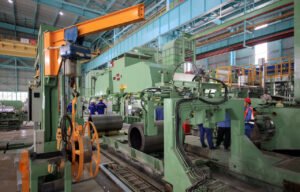Carbon Surcharge Impact on Stainless Steel Sheet Pricing Explained
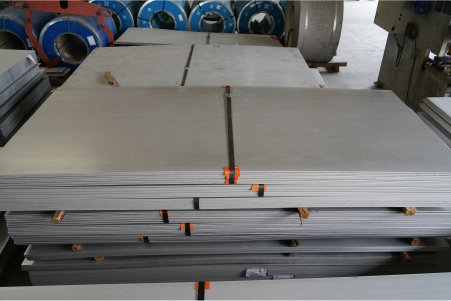
Navigating the volatile costs of stainless steel can be frustrating, especially with new, complex charges appearing. As Global Business Director at MFY, I've seen how carbon surcharges create uncertainty. Understanding these is key to managing your procurement budget for stainless steel sheets effectively.
A carbon surcharge is an additional fee applied to stainless steel products, including sheets, to account for the carbon dioxide emissions generated during their manufacturing process. It directly influences the final price, reflecting the growing global emphasis on environmental accountability in industrial production.
The introduction of carbon surcharges might seem like another unwelcome cost, but it's a critical component in the evolving landscape of global trade and environmental responsibility. As we at MFY guide our clients, from large manufacturing companies in India to engineering contractors in Southeast Asia, we emphasize that comprehending these surcharges is no longer optional—it's essential for strategic planning and maintaining a competitive edge in your respective industries.
The push for decarbonization is reshaping heavy industries like steel production. Carbon surcharges are a direct market-based instrument reflecting this shift, aiming to incentivize producers to invest in greener technologies. For instance, the EU's Carbon Border Adjustment Mechanism (CBAM)1 is a prominent example of how regions are looking to level the playing field and prevent carbon leakage. At MFY, with our integrated supply chain and focus on innovation-driven development, we are committed to helping our clients understand these mechanisms. We believe transparency regarding such costs is crucial for building resilient supply chains, a core tenet of our mission to support the global expansion of China's stainless steel industry. This understanding allows businesses to better anticipate fluctuations and make informed decisions when sourcing stainless steel sheets, coils, or pipes.
What is a carbon surcharge in the context of stainless steel sheet pricing?
Are you finding unexpected fees on your stainless steel sheet invoices, causing confusion and budget headaches? I've heard this from many clients. At MFY, we believe clarity is crucial, so let's define exactly what a carbon surcharge entails for your stainless steel sheet purchases.
A carbon surcharge, in stainless steel sheet pricing, is a specific levy added by producers. This fee aims to cover costs associated with carbon emissions during manufacturing, driven by environmental regulations and the push for industrial decarbonization, directly impacting your material costs.
The emergence of carbon surcharges isn't arbitrary; it's a direct consequence of escalating global efforts to combat climate change. Governments and international bodies are increasingly implementing policies that put a price on carbon emissions, and the steel industry, being energy-intensive, is a primary focus. As a company, MFY is deeply rooted in the stainless steel industry, and we see these surcharges as a critical, albeit complex, element of modern trade. For our clients, whether they are distributors in the Middle East sourcing stainless steel coils or equipment integrators in Russia needing specialized pipes, understanding the "why" behind this surcharge is the first step. It's not just another tax; it's a mechanism designed to encourage steel producers to adopt cleaner production methods, invest in new technologies, and ultimately reduce their carbon footprint. While this can translate to higher initial costs, the long-term goal is a more sustainable industry. We work closely with our partners to navigate these changes, ensuring that our clients are well-informed about how these global trends affect their procurement of MFY's stainless steel products. This proactive approach helps in better cost forecasting and strategic decision-making.

The carbon surcharge is more than just a line item; it’s a reflection of a paradigm shift in industrial accountability. Understanding its nuances is vital for anyone involved in the procurement or use of stainless steel. As we delve deeper, it's important to differentiate it from other price adjustments and to grasp how its calculation can vary, impacting your bottom line. At MFY, we strive to provide this clarity, helping our clients make informed decisions.
The Genesis of Carbon Surcharges in the Steel Industry
The steel industry has long been recognized as a significant contributor to global carbon emissions, primarily due to its reliance on carbon-intensive processes like blast furnaces using coking coal. Historically, environmental regulations focused on pollutants like sulfur oxides and particulate matter. However, with the growing urgency of climate change, the focus has shifted dramatically towards greenhouse gas emissions, particularly CO2. This shift prompted governments worldwide to explore mechanisms that internalize the environmental cost of carbon.
Early initiatives included voluntary reporting and efficiency targets, but these often proved insufficient to drive the necessary large-scale changes. This led to the development and implementation of more direct carbon pricing mechanisms. The European Union Emissions Trading System (EU ETS)2, launched in 2005, was a landmark scheme, creating a market for carbon allowances. Other regions followed with their own versions of carbon taxes or cap-and-trade systems. For the steel sector, this meant that emissions were no longer a "free" byproduct of production but a quantifiable cost, leading directly to the concept of carbon surcharges passed on to consumers. Industry data from the World Steel Association indicates that the steel industry accounts for approximately 7-9% of global direct CO2 emissions, underscoring the pressure for decarbonization and the rationale behind these surcharges.
At MFY, we've observed these developments closely. When I discuss this with clients, like a manufacturing firm in India looking to source our stainless steel sheets, I emphasize that these surcharges are not unique to one supplier but are becoming an industry standard. This understanding helps them contextualize the costs and plan accordingly, appreciating that this is part of a global movement towards sustainability, a value MFY champions through its commitment to innovation and efficient supply chains.
Differentiating Surcharges: Carbon vs. Other Price Adjustments
In the stainless steel market, buyers are accustomed to various surcharges. Alloy surcharges, for example, are common, fluctuating with the prices of raw materials like nickel, chromium, and molybdenum, which are key components of stainless steel. Fuel surcharges might be applied to cover transportation cost volatility. Currency adjustment factors can also appear, especially in international trade, to mitigate risks from exchange rate fluctuations. These have long been part of the pricing structure.
The carbon surcharge, however, is distinct in its origin and purpose. Unlike alloy surcharges, which are tied to the direct input material costs, the carbon surcharge is directly linked to the environmental impact of production – specifically, the CO2 emitted. Its primary driver is not commodity market fluctuation in the traditional sense, but regulatory policy and the cost of carbon emissions (either through a direct tax or the price of emission allowances in an ETS). This distinction is crucial for accurate cost analysis and strategic sourcing.
I recall a situation with one of our distributor clients in Southeast Asia. They were initially confused when they saw a carbon surcharge on an invoice for MFY stainless steel coils, mistaking it for a new type of alloy surcharge. We took the time to explain the difference, highlighting that this surcharge reflected the cost our production partners incurred due to new environmental regulations. This clarification helped them not only understand the specific invoice but also to better forecast future costs, as carbon pricing mechanisms have different drivers and volatility compared to, say, nickel prices. This is part of MFY's commitment to transparency and client education.
The Calculation Methodology: How Emissions Translate to Cost
The exact methodology for calculating carbon surcharges can vary between producers and regions, adding a layer of complexity. Generally, it involves determining the carbon footprint per ton of steel produced and then applying a monetary value to those emissions. This monetary value might be derived from the prevailing price of carbon in an ETS, a nationally mandated carbon tax rate, or an internal cost of carbon adopted by the steel company.
Some producers might use industry-average emissions benchmarks for specific steel grades, while others might have more sophisticated systems based on the actual emissions from their specific plants or even individual production lines. The energy source used in production (e.g., coal-based versus electric arc furnace using renewable energy) significantly influences the emissions intensity and, therefore, the potential surcharge. For instance, data from research institutes like Agora Energiewende highlights that conventional blast furnace steelmaking can emit around 1.8-2.0 tons of CO2 per ton of crude steel, whereas EAF routes using scrap can be significantly lower, especially if powered by renewables.
At MFY, while we are not the primary producers for all components, we work with our integrated supply chain partners who are facing these calculations. Our role involves ensuring transparency for our clients, explaining how these surcharges are derived when the information is available, and helping them understand the factors that might cause these surcharges to change. For example, if a carbon price in a relevant market is €80 per ton of CO2, and a particular type of stainless steel sheet production emits 0.5 tons of CO2 per ton of product attributable to the surcharge scope, the direct carbon surcharge could be €40 per ton of steel sheet, before any administrative mark-ups. This is a simplified example, but it illustrates the basic principle we help our clients, from equipment integrators to construction contractors, understand.
| Surcharge Type | Primary Purpose | Basis of Calculation | Typical Variability |
|---|---|---|---|
| Alloy Surcharge | Reflect cost of alloying elements (Ni, Cr, Mo) | Market prices of specific raw materials | High |
| Fuel Surcharge | Cover volatile transportation/energy costs | Price of diesel, oil, or other energy sources | Medium to High |
| Carbon Surcharge | Account for CO2 emission costs during production | Carbon price (ETS, tax), emission intensity of steel | Medium to High |
| Currency Adj. | Mitigate exchange rate fluctuation risks | Fluctuations in exchange rates between currencies | Medium |
Carbon surcharges reflect environmental costsTrue
Carbon surcharges are directly tied to CO2 emissions during production, not arbitrary fees.
Carbon surcharges equal alloy surchargesFalse
Carbon surcharges are calculated based on emissions, while alloy surcharges reflect raw material costs.
How does the carbon surcharge affect the overall pricing of stainless steel sheets?
Worried about your stainless steel sheet budget being unexpectedly inflated by new charges? The carbon surcharge is a reality that directly impacts your final cost. As we at MFY assist clients, from manufacturers to traders, understanding this impact is vital for accurate financial planning.
Carbon surcharges directly increase the total acquisition cost of stainless steel sheets. This fee, calculated per ton based on emissions, is added to the base price, making accurate budgeting more challenging yet crucial for buyers in various industries.
The most immediate and noticeable effect of a carbon surcharge is, quite simply, an increase in the price you pay for stainless steel sheets. This isn't a hidden cost absorbed by the producer; it's typically passed through the supply chain to the end-user. For MFY's diverse clientele, including construction contractors in the Middle East working on large infrastructure projects or manufacturing companies in India producing goods for export, this means that project estimates and material budgets must now explicitly account for carbon surcharges3. The surcharge is usually quoted per metric ton, so for large orders of stainless steel coils or sheets, the cumulative financial impact can be substantial. For example, a seemingly small surcharge of $30 per ton on a 100-ton order translates to an additional $3,000. This direct cost implication necessitates more diligent quotation reviews and proactive discussions with suppliers like MFY to understand the current surcharge levels and potential for future fluctuations. We aim to provide this transparency to help our clients avoid unexpected financial burdens and maintain profitability.
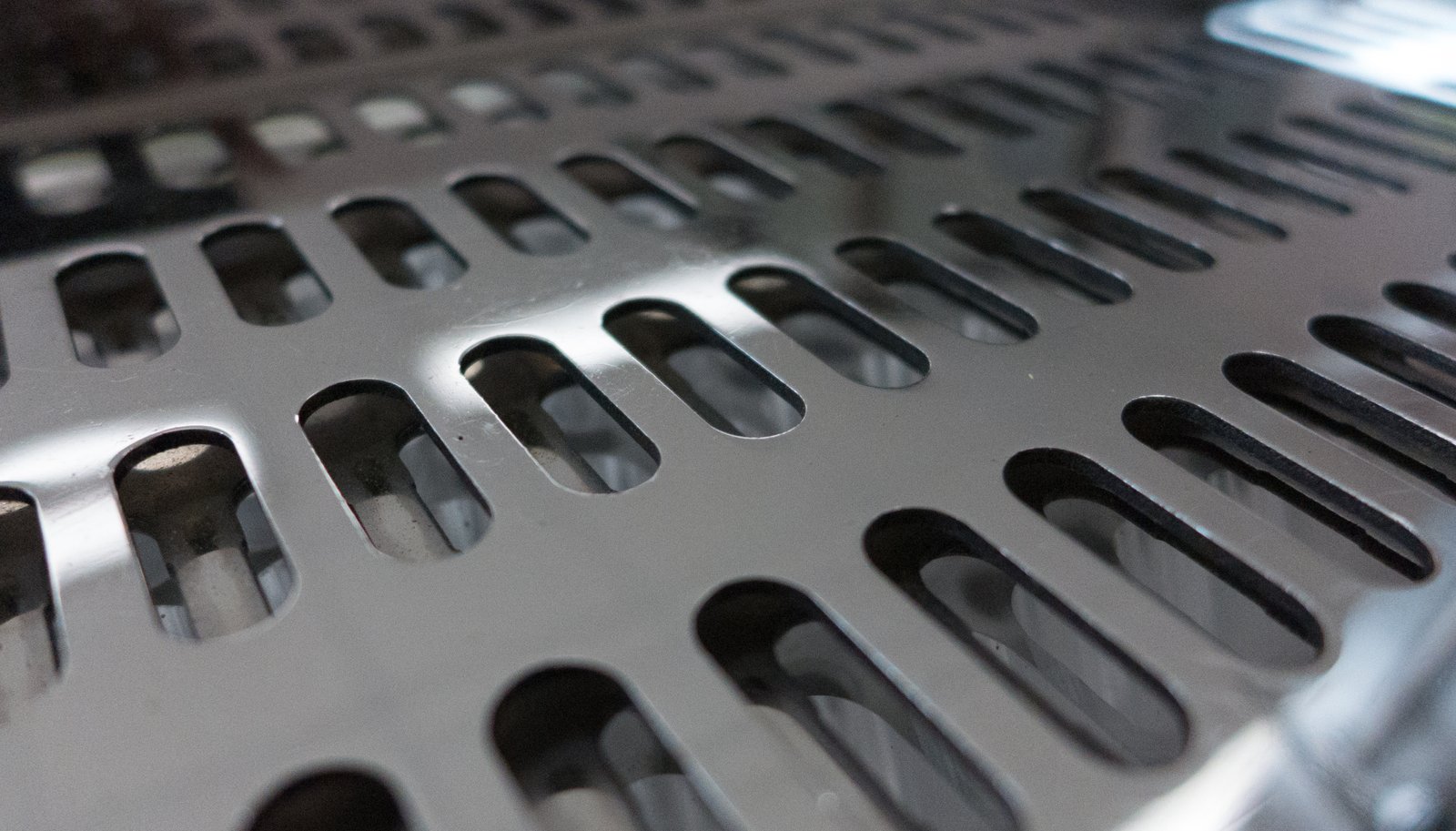
The impact of carbon surcharges on stainless steel sheet pricing extends beyond a simple addition to the invoice. It influences market dynamics, purchasing decisions, and even the competitive landscape. As we explore this further, it's clear that both direct and indirect effects must be considered by all stakeholders in the stainless steel value chain. From my perspective at MFY, helping our clients navigate this is a key part of our service.
The Direct Cost Component: Surcharge as a Line Item
The most straightforward way carbon surcharges affect pricing is by appearing as a distinct line item on quotations and invoices for stainless steel sheets. This transparency, while sometimes leading to initial sticker shock, is crucial for buyers to understand the full cost structure4. Unlike embedded costs that are harder to discern, a clearly stated carbon surcharge allows for direct comparison and tracking over time. It represents the portion of the price specifically attributed to the carbon emissions associated with the production of that steel.
I recall working with an engineering and construction contractor based in Southeast Asia who was bidding for a large public infrastructure project requiring several hundred tons of our MFY stainless steel sheets. When they received our initial quotation, the carbon surcharge was clearly itemized. While it added a noticeable amount to the total material cost, our transparent approach allowed their procurement team to accurately factor this into their bid. For instance, if the base price was $2500/ton and the carbon surcharge was $45/ton, they could precisely calculate the impact: a $4500 increase for every 100 tons. This clarity prevented any downstream surprises and helped them manage their project budget effectively.
The cumulative effect of these surcharges on large-volume orders cannot be understated. For MFY's clients who are major distributors or manufacturing companies purchasing thousands of tons of stainless steel coil and sheet annually, even a modest per-ton surcharge translates into a significant operational expense. This necessitates a more strategic approach to procurement, often involving discussions about potential surcharge trends and how they might influence future purchasing decisions. Our goal at MFY is to facilitate these discussions, leveraging our integrated supply chain to provide as much foresight as possible.
Indirect Impacts: Market Dynamics and Price Sensitivity
Beyond the direct cost addition, carbon surcharges can have more subtle, indirect impacts5 on market dynamics and buyer price sensitivity. As these surcharges become more prevalent and potentially increase over time, they can contribute to a general upward pressure on the baseline price of stainless steel. This happens because the cost of producing steel, especially through traditional carbon-intensive methods, genuinely increases for the mills.
This can, in turn, influence buyer behavior. Some buyers might become more price-sensitive, actively seeking out suppliers or even steel grades that might, for various reasons, carry a lower carbon surcharge. This could be due to the producing mill using greener technologies or being located in a region with less stringent carbon pricing (though this latter point is often counteracted by mechanisms like Carbon Border Adjustment Mechanisms). For example, a client specializing in consumer goods manufacturing might start exploring alternative materials or designs that require less stainless steel if the price, inflated by carbon surcharges, begins to erode their product margins significantly.
From MFY's perspective, while carbon surcharges are an added cost dictated by external factors, we strive to maintain our competitiveness through other avenues. Our strong production capacity, efficient inventory management, and rapid export delivery help to offset some of the broader market pressures. We also engage with clients to explain that while the surcharge is a pass-through cost, our overall value proposition, including quality and service, remains compelling. The key is adapting to this new norm where environmental costs are explicitly part of the pricing.
Regional Disparities in Surcharge Application
A significant factor complicating the impact of carbon surcharges is the disparity in their application across different geographic regions. Not all countries or economic blocs have implemented carbon pricing mechanisms with the same rigor or at the same level. Some regions may have high carbon taxes or mature Emissions Trading Systems (ETS), leading to substantial surcharges, while others may have nascent policies or none at all.
This creates an uneven playing field in international trade. For example, stainless steel produced in a region with high carbon costs might be more expensive than steel from a region with lax environmental regulations, all else being equal. This is precisely what initiatives like the EU's CBAM aim to address, by imposing a levy on imports from countries with lower carbon standards. As MFY exports to diverse markets including India, Southeast Asia, the Middle East, and Russia, we navigate these varying regulatory landscapes daily. The presence, absence, or level of carbon surcharge can influence the landed cost of our stainless steel sheets and pipes differently in each market.
For our clients, this means that the impact of carbon surcharges can vary depending on the origin of the steel and the destination market. A distributor in a country with no local carbon tax might still see surcharges on imported steel if it comes from a region with carbon pricing. MFY's global reach and experience in these diverse markets enable us to provide tailored advice and transparent pricing that accounts for these regional complexities, ensuring our clients understand the full cost implications for their specific situation. This is a critical aspect of our role as an international trade and service brand in China's stainless steel industry.
| Quantity of Stainless Steel Sheet (Tons) | Base Price per Ton | Carbon Surcharge per Ton (Example) | Total Surcharge | Total Cost (Base + Surcharge) | Percentage Increase due to Surcharge |
|---|---|---|---|---|---|
| 10 | $2,200 | $50 | $500 | $22,500 | 2.27% |
| 50 | $2,200 | $50 | $2,500 | $112,500 | 2.27% |
| 100 | $2,150 (volume disc.) | $50 | $5,000 | $220,000 | 2.33% |
| 500 | $2,100 (volume disc.) | $50 | $25,000 | $1,075,000 | 2.38% |
Carbon surcharges increase stainless steel pricesTrue
The article clearly states that carbon surcharges are added to the base price of stainless steel sheets, directly increasing the total acquisition cost for buyers.
Carbon surcharges are absorbed by producersFalse
The text explicitly mentions that carbon surcharges are not hidden costs absorbed by producers, but rather passed through the supply chain to end-users.
What factors contribute to the fluctuation of carbon surcharge fees?
Are you struggling with the unpredictability of carbon surcharge fees, making long-term budgeting for stainless steel sheets a guessing game? I've seen how these fluctuations challenge our clients. At MFY, we believe identifying the drivers behind these changes is key to better anticipation.
Carbon surcharge fees fluctuate primarily due to evolving governmental environmental regulations, volatile carbon market prices (such as emission allowances), the specific energy mix used in steel production, and advancements or delays in adopting greener manufacturing technologies.
The dynamic nature of carbon surcharge fees stems from a confluence of interconnected factors, making them a moving target for procurement professionals. At MFY, we regularly track these elements to provide the best possible guidance to our clients, whether they are purchasing stainless steel coils for manufacturing in India or stainless steel pipes for construction projects in the Middle East. Governmental policies are a major driver; as countries update their climate targets or introduce new carbon taxes or emissions trading schemes (ETS), the direct cost of carbon can change, sometimes abruptly. For instance, an increase in a national carbon tax rate6 will almost certainly lead to a higher surcharge from producers in that country. Similarly, the price of carbon allowances in established ETS markets, like the EU ETS, can be quite volatile, influenced by economic activity, policy signals, and even speculative trading. This market-driven fluctuation directly impacts the cost that steelmakers face for their emissions, a cost they then pass on as part of the surcharge. Understanding these core drivers is the first step towards demystifying surcharge variability.
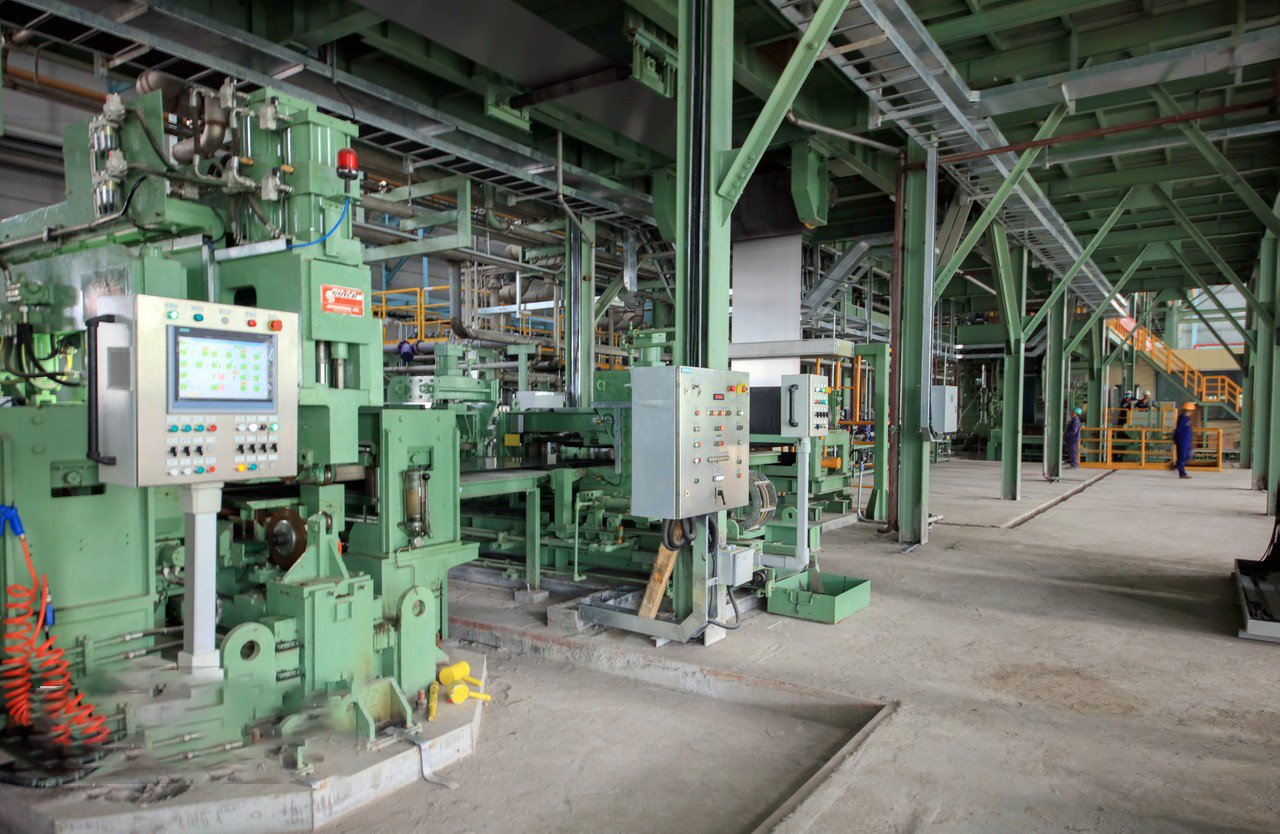
The fluctuation of carbon surcharge fees is a complex interplay of policy, market forces, and technological advancements within the steel industry. As these elements evolve, so too will the surcharges. For businesses relying on stainless steel, grasping these underlying factors is crucial for risk management and strategic planning. At MFY, our commitment to an innovation-driven approach includes monitoring these trends to support our clients.
Regulatory Policies and Emission Targets
Governmental regulatory policies are perhaps the most direct and impactful driver of carbon surcharge fluctuations. As nations strive to meet international climate commitments, such as those under the Paris Agreement, they implement and periodically revise a range of measures aimed at reducing industrial emissions. These can include setting stricter emissions caps within Emissions Trading Systems (ETS), increasing carbon tax rates, or phasing out subsidies for fossil fuels. Each of these policy shifts can have a near-immediate effect on the cost of carbon for steel producers.
For example, if a major steel-producing country decides to tighten its emission reduction targets for heavy industry, steel mills within that jurisdiction will likely face higher costs for their carbon footprint. This could be through needing to purchase more expensive emission allowances or paying a higher carbon tax per ton of CO2. Consequently, the carbon surcharge they apply to their products, including stainless steel sheets and coils, will likely increase. I've seen this happen where a client, an equipment integrator, had a long-term project and saw surcharge quotes for MFY stainless steel components vary over quarters due to announced policy changes in a key sourcing region.
Moreover, the scope and stringency of these regulations can differ significantly from one country or region to another, leading to a complex global patchwork. The introduction of new regulations, like Carbon Border Adjustment Mechanisms (CBAMs), further complicates the picture by attempting to equalize carbon costs between domestically produced and imported goods. At MFY, part of our service is to help our clients, particularly those in our export markets like Russia or Southeast Asia, understand how these evolving global and national regulatory landscapes might influence the pricing of the stainless steel products they rely on.
Carbon Market Volatility
For carbon surcharges linked to Emissions Trading Systems (ETS), the inherent volatility of carbon markets is a major factor. In an ETS, the price of carbon allowances (often called EUAs in the EU ETS, for example) is determined by supply and demand. Supply is typically capped by the government, while demand is driven by the emissions output of covered industries, including steel. This market-based price can fluctuate significantly due to various influences.
Economic conditions play a large role: during periods of high industrial activity, demand for allowances increases, potentially driving up prices. Conversely, economic slowdowns can reduce emissions and demand, leading to lower carbon prices. Policy announcements, such as changes to the cap on allowances or rules for their allocation, also create significant price movements. For instance, data from major carbon exchanges like ICE Endex often shows sharp price reactions to news about future ETS reforms. Speculative trading by financial institutions can further amplify this volatility, treating carbon allowances as a tradable commodity.
This market volatility directly translates to fluctuations in carbon surcharges for stainless steel sheets. If a steel producer sources its carbon cost from an ETS, a spike in allowance prices will necessitate a higher surcharge to cover those costs. As an example, the EU ETS allowance price saw considerable volatility, ranging from under €30 to over €90 per ton of CO2 in recent years. This unpredictability makes it challenging for buyers to forecast costs. MFY endeavors to keep abreast of these carbon market trends, offering insights to our manufacturing clients and distributors to help them anticipate potential shifts in surcharge levels.
Energy Mix and Production Efficiency
The specific energy sources used in the steelmaking process and the overall energy efficiency of a plant are critical determinants of its carbon footprint, and thus the basis for its carbon surcharge. Traditional integrated steel mills relying heavily on coal and coke in blast furnaces have a much higher emissions intensity compared to Electric Arc Furnaces (EAFs), especially if the EAFs are powered by renewable electricity and utilize a high proportion of recycled steel scrap.
As steel producers invest in new technologies to improve energy efficiency or switch to cleaner energy sources (e.g., green hydrogen, carbon capture utilization and storage - CCUS), their specific emissions per ton of steel can decrease. This, in turn, could lead to a comparatively lower carbon surcharge for their products over time, assuming the carbon price itself remains stable. However, these technological transitions require significant capital investment and time. For instance, research from organizations like the International Energy Agency (IEA) outlines various pathways for decarbonizing the steel sector, but highlights the substantial efforts needed.
Fluctuations in the surcharge can therefore also reflect the pace of these technological adoptions within the industry or by specific producers. If a producer MFY sources from makes a significant breakthrough in reducing their emissions, we would hope to see that reflected in more stable or even reduced surcharges for our clients purchasing stainless steel pipes or sheets. MFY values continuous evolution, and we encourage our supply chain partners to invest in greener production, aligning with our vision to be a leading international trade and service brand that also prioritizes sustainability. The energy transition in the steel sector is an ongoing process, meaning this factor will continue to influence surcharge levels for the foreseeable future.
| Factor Influencing Surcharge | Description | Potential Impact on Surcharge Volatility | Example |
|---|---|---|---|
| Regulatory Policy Changes | New laws, emission targets, carbon tax rates, ETS rule adjustments. | High | Government increases national carbon tax by 20%. |
| Carbon Market Prices (ETS) | Fluctuations in the price of emission allowances (e.g., EUAs). | High | EUA price spikes due to anticipated tighter supply. |
| Energy Mix of Producer | Shift in reliance on coal vs. gas vs. renewables vs. hydrogen in production. | Medium (Longer-term shifts) | Steel mill transitions a portion of its energy input to green hydrogen. |
| Production Efficiency | Investments in energy-saving technologies, process optimization. | Medium (Incremental changes) | Plant implements heat recovery system, reducing energy per ton. |
| Global Economic Conditions | Impact on industrial output, thus demand for steel and emission allowances. | Medium | Economic recession reduces industrial activity and carbon prices. |
Carbon markets affect surchargesTrue
Volatility in carbon allowance prices directly impacts the carbon surcharge fees that steel producers pass on to customers.
All countries have identical carbon policiesFalse
Carbon regulations vary significantly between countries, creating a complex global patchwork that affects surcharges differently.
What can manufacturers and buyers do to mitigate the impact of carbon surcharges?
Feeling the squeeze from rising carbon surcharges on your stainless steel sheet costs? It's a common concern I hear. Rather than just absorbing these costs, proactive strategies can help. At MFY, we believe both manufacturers and buyers have roles to play in mitigation.
To mitigate carbon surcharge impacts, manufacturers can invest in greener production technologies and improve energy efficiency. Buyers can explore long-term contracts, optimize material usage, and collaborate closely with transparent suppliers like MFY for better forecasting.
The challenge posed by carbon surcharges isn't insurmountable; it calls for strategic responses from all players in the stainless steel ecosystem. For manufacturers, including MFY's upstream partners, the focus is increasingly on decarbonizing production. This is a long-term endeavor but essential for future competitiveness. For buyers – our valued clients, from engineering contractors to distributors across India, Southeast Asia, and beyond – mitigation involves a blend of smart procurement tactics, design optimization, and fostering strong supplier relationships. At MFY, our fully integrated supply chain and innovation-driven approach mean we're actively engaged in discussions about how to navigate these costs. For example, we advise clients on the potential benefits of exploring longer-term purchasing agreements, which can sometimes offer more stability against volatile surcharge components, or discussing material specifications to ensure optimal use of our stainless steel sheets, coils, and pipes, thereby reducing waste and overall volume needed.

Mitigating the impact of carbon surcharges requires a multi-faceted approach, involving actions from the steel producers themselves, as well as strategic decisions by the buyers. It’s about building resilience and finding efficiencies in a changing cost landscape. As we delve into specific strategies, it becomes clear that collaboration and innovation are key. MFY is committed to being a partner in this process for our clients.
Strategies for Manufacturers (Like MFY's Partners)
For steel manufacturers, who are at the front line of carbon emissions and thus surcharges, mitigation strategies primarily revolve around decarbonizing their operations. This is a capital-intensive and technologically challenging endeavor, but one that is becoming increasingly imperative. One key strategy is investing in energy efficiency measures throughout the production process. This can range from upgrading older equipment to implementing advanced heat recovery systems, all aimed at reducing the amount of energy (and therefore often carbon) consumed per ton of steel produced.
A second, more transformative strategy involves shifting towards lower-carbon production methods. This could mean increasing the use of Electric Arc Furnaces (EAFs) fed with renewable electricity and scrap steel, which have a significantly lower carbon footprint than traditional Blast Furnace-Basic Oxygen Furnace (BF-BOF) routes. For primary steelmaking, research and development into breakthrough technologies like direct reduction of iron ore using green hydrogen7, or the implementation of Carbon Capture, Utilization, and Storage (CCUS) systems are crucial. For example, major steelmakers globally are piloting hydrogen-based steelmaking; data from entities like the HYBRIT project in Sweden shows promising emission reductions.
At MFY, while we are a diversified group integrating various aspects of the stainless steel supply chain including processing and tube manufacturing, we also rely on primary steel producers. We actively encourage and seek partnerships with suppliers who demonstrate a clear commitment to investing in these greener technologies. This aligns with MFY's value of continuous evolution and our vision to support a more sustainable global steel industry. Ultimately, such investments by manufacturers can lead to lower inherent carbon footprints for their products, which should translate into more competitive carbon surcharges for our clients purchasing MFY stainless steel sheets and pipes.
Buyer-Side Tactics for Cost Management
Buyers of stainless steel also have several tactics at their disposal to manage and mitigate the impact of carbon surcharges. One common approach is to engage in discussions about long-term agreements (LTAs) or larger volume commitments with trusted suppliers like MFY. While LTAs may not eliminate surcharges, they can sometimes offer more predictable pricing formulas or provide a degree of insulation against short-term surcharge volatility, allowing for better budget forecasting.
Another crucial tactic is optimizing material usage and design. I've worked with engineering and construction contractors who, facing rising steel costs, have re-evaluated their designs to use stainless steel more efficiently. This might involve specifying thinner gauges where structurally permissible, designing for less waste during fabrication, or choosing grades that offer the required performance with potentially lower associated carbon footprints (if such differentiation becomes available and verifiable). For a manufacturing client producing consumer appliances, this could mean redesigning components to use less MFY stainless steel sheet per unit, directly reducing their exposure to per-ton surcharges.
Furthermore, building strong, transparent partnerships with key suppliers is paramount. At MFY, we believe in open communication regarding market conditions, including the factors driving carbon surcharges. This allows our clients, from distributors to equipment integrators, to have a clearer picture and engage in proactive discussions about their procurement strategies. While diversifying sourcing can be a risk mitigation strategy for some, for specialized products or in volatile markets, a deep relationship with a reliable supplier like MFY, known for its rapid export delivery and strong inventory, can be more beneficial in navigating complex cost structures.
Collaborative Approaches and Supply Chain Transparency
Beyond individual actions by manufacturers or buyers, collaborative approaches and enhanced supply chain transparency offer significant potential for mitigating carbon surcharge impacts. This involves open dialogue and data sharing between all stakeholders: from the raw material suppliers and steel producers to distributors like MFY, and finally to the end-users such as manufacturing companies and construction contractors. When all parties have a clearer understanding of the cost drivers, including carbon, it fosters a more collaborative environment for finding solutions.
MFY is committed to this transparency. We strive to provide our clients with clear breakdowns of costs where possible and explain the market dynamics influencing surcharges on our stainless steel coil, sheet, and pipe products. For instance, we might work with a large manufacturing client in India to develop a purchasing plan that considers anticipated trends in carbon pricing, helping them to time their procurements more strategically or to budget more accurately for upcoming projects. This kind of collaborative forecasting can help buffer against sudden shocks.
Moreover, industry-wide initiatives aimed at standardizing carbon footprint accounting and reporting for steel products can also contribute. Verifiable data on the carbon intensity of different steel products could eventually allow buyers to make more informed choices, rewarding producers who have invested in decarbonization. This transparency supports MFY's mission to drive the global expansion of China's entire stainless steel supply chain in a responsible and forward-looking manner. Joint efforts in risk management, such as exploring hedging mechanisms where feasible (though complex for surcharges), or simply sharing market intelligence, can build a more resilient supply chain for everyone.
| Mitigation Strategy | Implementer(s) | Key Action(s) | Potential Effectiveness (Short/Long Term) | MFY's Role/Involvement |
|---|---|---|---|---|
| Invest in Green Steelmaking Tech | Steel Manufacturers | Adopt EAFs, hydrogen DRI, CCUS; improve energy efficiency | Long Term (High) | Partnering with/encouraging sustainable producers |
| Optimize Material Usage & Design | Buyers (Engineers, Designers) | Redesign products for less steel, specify efficient grades, reduce waste | Medium Term (Medium) | Advising on material selection, providing precise cuts |
| Long-Term Agreements (LTAs) | Buyers & Suppliers (like MFY) | Negotiate stable pricing components, volume commitments | Short/Medium Term (Medium) | Offering flexible contract options, ensuring supply security |
| Enhance Supply Chain Transparency | All Stakeholders (incl. MFY) | Share data on carbon costs, collaborative forecasting, clear invoicing | Medium Term (Medium-High) | Providing clear cost breakdowns, market insights |
| Proactive Communication & Forecasting | Buyers & Suppliers (like MFY) | Regular discussions on market trends, surcharge drivers, joint planning | Short/Medium Term (Medium) | Keeping clients informed, facilitating planning |
Manufacturers can reduce carbon surchargesTrue
Investing in greener production technologies and improving energy efficiency helps manufacturers lower their carbon footprint, which can reduce carbon surcharges over time.
Buyers cannot influence carbon surchargesFalse
Buyers can mitigate carbon surcharge impacts through long-term contracts, material optimization, and collaborating with transparent suppliers like MFY.
What are the long-term recommendations for adapting to carbon surcharge changes?
Are you concerned about how to future-proof your business against the ongoing evolution of carbon surcharges in the stainless steel market? It's a strategic challenge I often discuss. At MFY, we advocate for building long-term resilience and adaptability rather than just reacting to changes.
Long-term adaptation to carbon surcharge changes involves embedding sustainability into core business strategy, investing in predictive analytics for market intelligence, fostering agile supply chains, and continuously educating teams on evolving regulatory and environmental landscapes.
Looking ahead, carbon surcharges are likely to remain a feature of the stainless steel market, and may even become more significant as global decarbonization efforts intensify. Therefore, adapting to these changes requires more than just short-term fixes; it demands a fundamental shift in how businesses approach procurement, operations, and strategy. For MFY and our clients – whether they are large-scale manufacturers, engineering and construction contractors, or dynamic distributors across our export markets like India, Southeast Asia, and the Middle East – this means embracing a forward-looking perspective. This involves not only understanding current surcharge mechanisms but also anticipating future trends and building the capacity to respond effectively. At MFY, our commitment to innovation and a fully integrated supply chain is geared towards helping our clients build this resilience, ensuring they can continue to source high-quality stainless steel sheets, coils, and pipes efficiently, even as the cost landscape evolves.
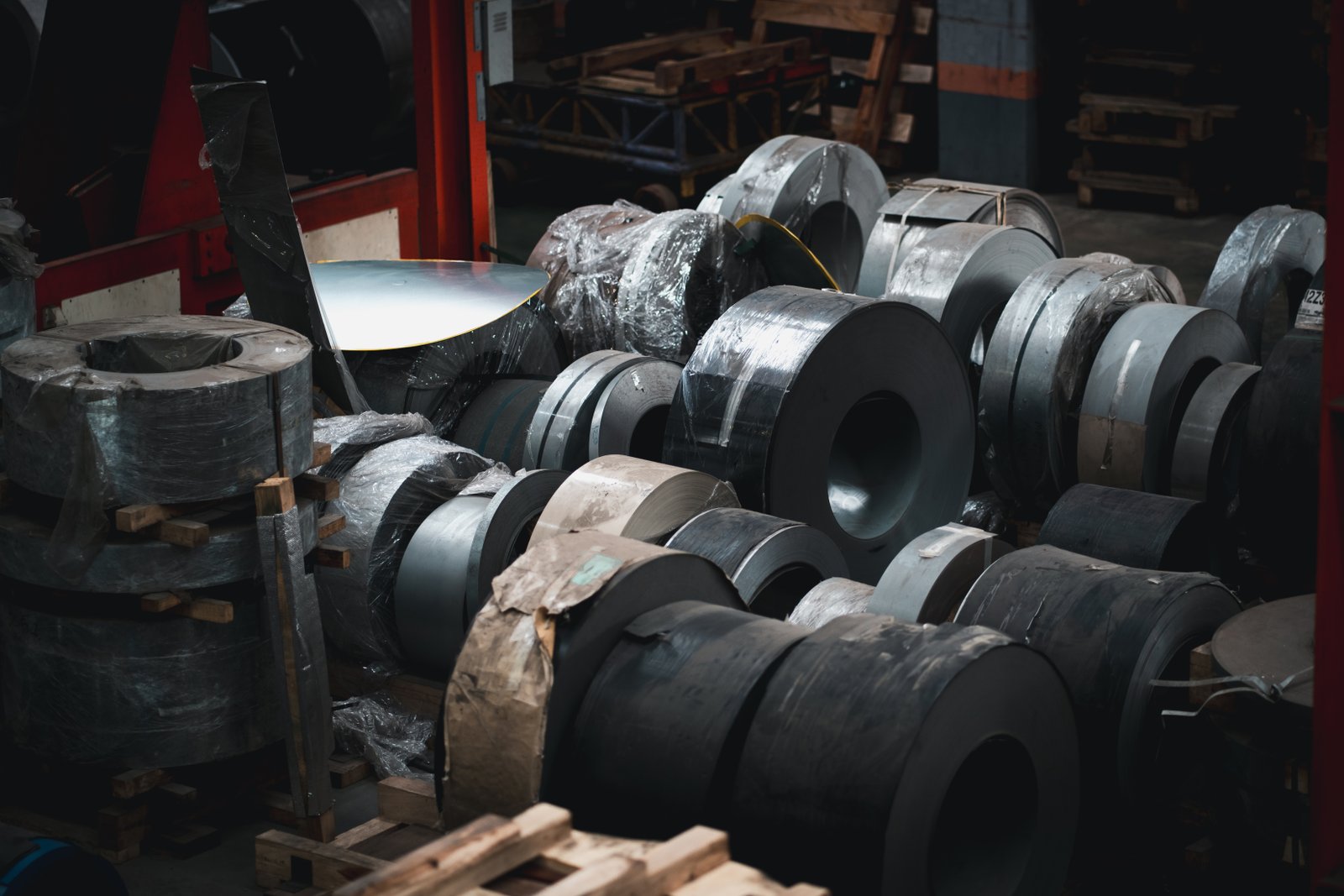
Adapting to the dynamic nature of carbon surcharges in the long run is not just about cost management; it's about strategic positioning in an increasingly environmentally conscious global economy. For MFY and the businesses we serve, this means cultivating a deeper understanding of sustainability, leveraging data, and building truly resilient operational models. The journey requires foresight and a commitment to continuous evolution.
Embracing Sustainability as a Core Business Principle
The most profound long-term adaptation to carbon surcharges is to move beyond viewing them merely as a cost and instead see them as a market signal reflecting the broader, irreversible shift towards a green economy. For businesses across the value chain, from steel producers to end-users of MFY's stainless steel products, integrating sustainability into the core of their business strategy is becoming essential for long-term viability and competitiveness. This means actively seeking ways to reduce one's own carbon footprint, demanding greater environmental performance from suppliers, and even innovating products and services that support a low-carbon future.
At MFY, we are on this journey ourselves. Our mission to drive the global expansion of China’s entire stainless steel supply chain is increasingly intertwined with principles of sustainability. This involves scrutinizing our own operations, from cold-rolled processing and tube manufacturing to our warehousing and logistics, and working with our production partners to encourage lower-emission practices. We believe that businesses that proactively embed sustainability – for instance, by setting internal carbon reduction targets or investing in circular economy models for stainless steel – will not only mitigate the direct impact of surcharges but also unlock new opportunities, enhance brand reputation, and attract talent and investment. For our manufacturing clients, this could mean designing products that are more durable and recyclable, thereby contributing to a circular economy for stainless steel.
Ultimately, the pressure for decarbonization that gives rise to carbon surcharges will reward companies that are ahead of the curve. Data from various ESG (Environmental, Social, and Governance) rating agencies often shows a correlation between strong sustainability performance and financial resilience. As Global Business Director, I encourage our clients to see this not as a burden, but as an opportunity to innovate and lead in their respective sectors, supported by reliable partners like MFY who understand this evolving landscape.
Investing in Predictive Analytics and Market Intelligence
In a market characterized by fluctuating carbon surcharges, the ability to anticipate changes becomes a significant competitive advantage. Investing in robust market intelligence and predictive analytics capabilities can help businesses better forecast surcharge trends, raw material costs, and overall price movements for products like stainless steel sheets and coils. This involves gathering and analyzing a wide array of data, including regulatory announcements, carbon market prices, energy cost forecasts, and geopolitical factors influencing steel production.
MFY is committed to digital innovation, and part of this commitment involves enhancing our ability to provide valuable market insights to our clients. While predicting exact surcharge levels with perfect accuracy is challenging, sophisticated data analysis can identify key drivers, model potential scenarios, and provide probabilistic forecasts. For our distributor clients, for example, having access to better forecasts for stainless steel pipe prices, inclusive of potential surcharge impacts, can inform their inventory management strategies and purchasing decisions, helping them to optimize stock levels and avoid being caught out by sudden price spikes.
For manufacturing companies and engineering contractors using MFY's stainless steel, such intelligence can aid in more accurate project bidding and long-term financial planning. This might involve developing internal expertise or partnering with specialized market analysis firms. The goal is to move from a reactive to a more proactive stance, using data-driven insights to make informed decisions about when to buy, how much to buy, and what contractual arrangements might be most favorable in light of anticipated surcharge movements.
Fostering Agile and Resilient Supply Chains
The era of carbon surcharges underscores the need for supply chains that are not only efficient but also agile and resilient. Agility allows businesses to respond quickly to changing market conditions, including shifts in surcharge levels or regional variations in carbon pricing. Resilience enables supply chains to withstand shocks and disruptions, ensuring continuity of supply for critical materials like stainless steel. MFY’s competitive strengths, including our fully integrated supply chain, strong production capacity and inventory, and rapid export delivery, are all designed to contribute to this agility and resilience for our clients.
Building such supply chains involves several elements. Diversification of sourcing, where feasible, can reduce over-reliance on a single region or supplier that might be subject to specific carbon cost pressures. However, equally important is the development of deep, collaborative relationships with key strategic suppliers like MFY. Strong partnerships foster open communication, mutual understanding of risks, and joint problem-solving when challenges like surcharge volatility arise. For example, MFY might work with a key equipment integrator client to explore alternative shipping routes or production schedules to mitigate the impact of a sudden regional surcharge increase.
Furthermore, investing in robust inventory management systems and strategies can help buffer against short-term price fluctuations. While holding excessive inventory has its own costs, a strategically managed stock of essential stainless steel products can provide flexibility. For MFY, our warehousing capabilities play a crucial role in this, allowing us to support the needs of our clients across diverse markets like India, Southeast Asia, and Russia, ensuring they have access to the stainless steel sheets, coils, and pipes they need, when they need them, even in a complex and evolving cost environment. This commitment to supply chain excellence is central to MFY's vision of becoming the leading international trade and service brand in China's stainless steel industry.
| Long-Term Strategy | Key Action Areas | How MFY Supports/Aligns | Target Client Benefit |
|---|---|---|---|
| Embrace Core Sustainability | Set internal emission targets, sustainable sourcing, circular economy initiatives. | Promoting responsible supply chain practices, partnering with eco-conscious producers, offering durable MFY products. | Enhanced brand reputation, long-term cost stability, meeting stakeholder expectations. |
| Invest in Predictive Analytics | Data gathering, market analysis, scenario modeling, forecasting tools. | Sharing market intelligence, investing in MFY's digital innovation for better insights. | Improved budgeting, strategic procurement timing, reduced risk of price shocks. |
| Foster Agile & Resilient Supply Chains | Supplier collaboration, strategic inventory, diversified sourcing (where viable). | MFY's integrated supply chain, strong inventory, rapid delivery, transparent communication, flexible solutions. | Supply security, ability to adapt to changes, optimized landed costs for MFY steel. |
| Continuous Education & Training | Stay updated on regulations, carbon markets, new technologies. | Providing clients with updates on market conditions affecting stainless steel, sharing MFY's industry expertise. | Informed decision-making, proactive adaptation, maintaining competitive edge. |
Sustainability reduces carbon surcharge impactTrue
Proactively embedding sustainability into business strategy helps mitigate carbon surcharge effects while creating competitive advantages.
Carbon surcharges are temporary market adjustmentsFalse
Carbon surcharges reflect a structural shift toward decarbonization and will likely intensify as global climate policies strengthen.
Conclusion
Understanding carbon surcharges on stainless steel sheets is crucial. These fees, driven by environmental policies, directly impact pricing. Proactive adaptation through sustainable practices, market intelligence, and agile supply chains, supported by partners like MFY, is key for navigating this evolving landscape effectively.
-
Understand how CBAM impacts global trade and carbon surcharges ↩
-
Discover the mechanics behind carbon pricing in the EU ↩
-
Understand the impact of carbon surcharges on material budget planning in steel procurement ↩
-
Gain insights on the comprehensive costs included in steel pricing beyond base cost ↩
-
Learn about market dynamics and buyer sensitivities influenced by carbon surcharges ↩
-
Learn about the financial effects of carbon tax rates on steel production ↩
-
Explore innovative low-carbon steel production methods ↩
Have Questions or Need More Information?
Get in touch with us for personalized assistance and expert advice.
